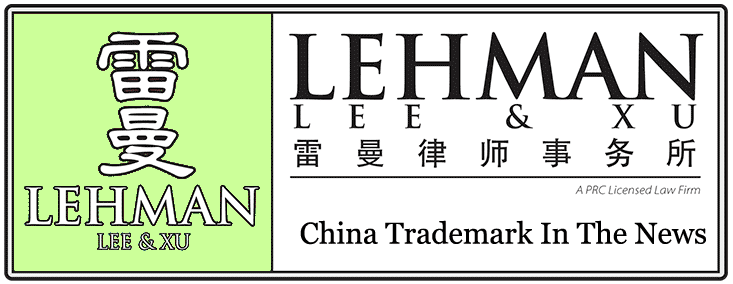
 |
|
LEHMAN, LEE & XU China Lawyer
|
|
China Trademark In The News
|
|
December 2013
|
The China Law News keeps you on top of business, economic and political events in the China. |
In the News |
Burberry’s China trademark threat a handbag war worth fighting |
Burberry’s iconic Haymarket check tartan pattern is under threat following a trademark dispute in China. Local fashion manufacturer Polo Santa Roberta successfully applied to have the Burberry trademark removed from China’s Register of Trademarks, on the basis of three consecutive years of non-use by Burberry. Needless to say, Burberry has initiated an appeal and appears hopeful the appeal will be successful. Trademarks are registered according to the class of goods manufactured or services provided by the trademark owner. So while the decision of the Chinese Trademarks Office has been to remove the trademark, it is only for the registration related to leather goods, not all of Burberry’s range of products. Australia has a similar provision in its trademark law to that invoked by China in this case. Where an application has been made by another party to have the trademark removed for non-use, it’s up to the registered owner to provide evidence of use during the preceding three years. Under Chinese trademark law, the Trademark Office provides the registered trademark owner two months in which to “provide evidence of use of the trademark prior to the submission of the application for cancellation, or explain proper reasons for non-use”. Burberry’s Haymarket tartan check is recognized around the world, including China. Martin Long/Flickr An iconic mark Even if Burberry can’t reverse the decision, the concern is surely whether the Haymarket check can then be registered by Polo Santa Roberta for use in handbags. Burberry could rely on the rules related to “well-known” marks, which state “Where the trademark of an identical or similar kind of goods is a reproduction, imitation, or translation of another person’s well-known trademark not registered in China and is liable to cause public confusion, no application for its registration may be granted and its use shall be prohibited.” This would limit Polo Santa Roberta from using the Haymarket check for its own purposes. There’s also the rule relating to misleading the public to the detriment of the trademark owner. “Where the trademark of a different or dissimilar kind of goods is a reproduction, imitation, or translation of another person’s well-known trademark not registered in China and it misleads the public so that the interests of the owner of the registered well-known trademark are likely to be impaired, no application for its registration may be granted and its use shall be prohibited.” This means that by having in place the registration of the Haymarket check for other goods that should be enough for Burberry to block Polo Santa Roberts from registering the pattern in relation to its leather goods. What lessons can be learned from this set of circumstances? Trademark registrants in China need to manage their marks well and ensure they are used regularly. If it’s not feasible to register the mark in all classes of goods or services that might be available to competitors, then at least embark upon a campaign of developing the mark into a “well-known” trademark and ensure the legal criteria for well-known marks can be met. http://theconversation.com/burberrys-china-trademark-threat-a-handbag-war-worth-fighting-20968
|
|
|
|
|